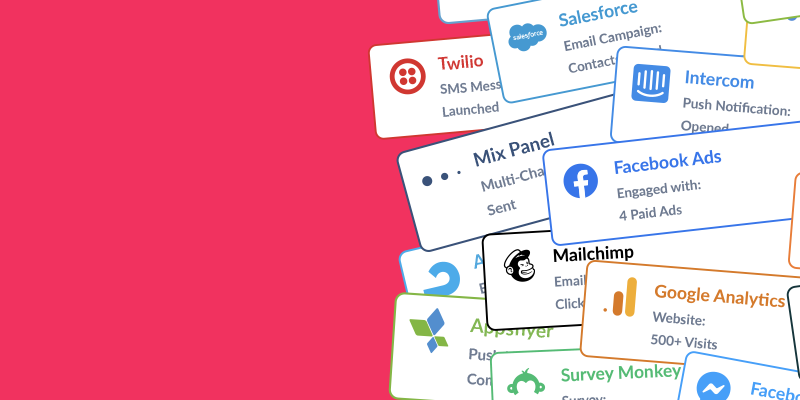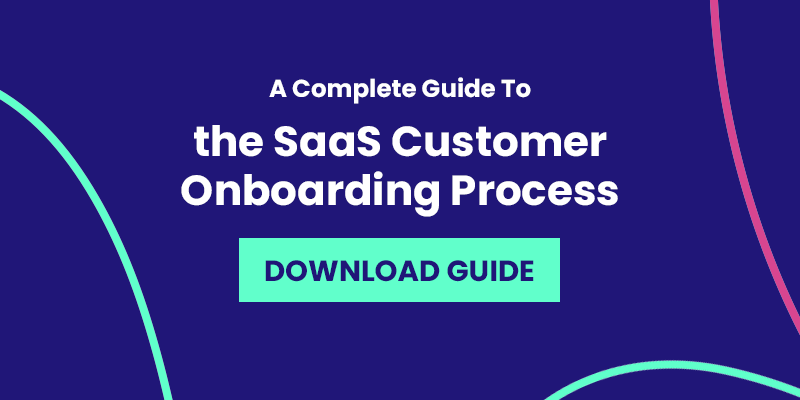Cleaning Your CRM Data: What To Do & How To Do It
Cleaning, tidying, updating and reorganising; 4 manual tasks that many of us dread. When we have spare time in our work or home lives, refreshing the outdated or scrubbing the unkempt is not always our top priority; it’s often pushed to the back of our minds and marked as unimportant.
Nevertheless, whether it’s your office desk, your bedroom, or your customers’ data, allowing your space to become cluttered and full of dead weight will hinder your productivity. This is especially true when it comes to your Customer Relationship Management (CRM) platform.
You’re a clever person, so the last thing you want to do is appear unprofessional by sending a message to a contact that has opted out of communication or emailing a person who has left their current company. That’s just bad customer experience (CX).
Cleaning up your CRM data can seem like a daunting task, especially if it’s been a little while since you’ve entered that realm. But regularly analysing your data and managing your contacts is super important in order for you to operate efficiently and retain the leads that offer you value.
So don’t look back now -- the fact that you’re reading this means you’re ready to put on those rubber gloves and begin scrubbing. And you can give yourself a pat on the back for coming to the right place to get started.
We’re going to keep things simple. There are 3 primary elements that you need to focus on and 3 key steps that you need to take in order to keep your CRM up to date and fully functioning.
So let’s get started:
1. Delete or export old, useless or unengaged contacts
If you’ve done your research, you will know that there’s no perfect time to remove a contact, and doing so can seem like a daunting task - you don’t want to delete a prospective sale, of course. However, you also don’t want your database to be clogged up with irrelevant information.
Consider the last time a contact was active; most CRMs allow you to filter your contact based on their last activity date e.g. ‘last marketing email open date / recent conversion date / last email reply date’ - these indicate the engagement level of an individual and give you insight as to whether or not they’re valuable to you. If you have a contact that hasn’t engaged with your company for a number of months, for example, chances are that they have left the company or simply aren’t interested in what you have to offer.
This type of contact should be removed without hesitation. The same goes for those contacts who have hard bounced or unsubscribed from your marketing emails.
Source: Gartner
If your CRM has the option to, we advise that you create a list of the contacts who are unengaged so that you can delete or export the information efficiently by doing it in bulk rather than by each contact individually. Although, if you do this, you must be sure that the contacts aren’t valuable - you don’t want to accidentally delete the wrong list.
2. Remove duplicates
Duplicate data is a real issue for many businesses. Research by IBM shows that poor data quality costs the US economy around $3.1 trillion per year which is… less than ideal. But it’s totally understandable that a CRM with duplicate data will harm your business efforts. If your business development representatives email a contact multiple copies of the same message it appears unprofessional, will likely irritate your customer or prospect and you run the risk of losing the contact altogether - which could even lead to the loss of a sale and a damaged reputation.
Speaking of lost sales, having duplicate information for your contacts can waste your marketing budget, too. If you pay for your CRM by the number of contacts you store, duplicate contacts can push up your monthly bill. Similarly, you could be wasting money and physical resources by sending out 5 brochures to the same company. Whilst these costs may seem minimal, the numbers don’t take long to add up.
Source: IBM
Regularly reviewing your data will ensure that you identify any duplicate contacts that you have. If you clean your CRM platform regularly, you will be able to quickly scan for duplicates which won’t take long. Aside from identifying duplicate information by eye, many CRM tools, like Hubspot, have a duplicate management tool that uses machine learning to identify duplicate contacts and companies. The model considers a contact’s name, email, IP-derived country, phone number, zip code, and company name when comparing contacts. It then gives you the option to accept the duplicates and merge them, or reject them as duplicates and move on. This feedback then helps the model to learn and improve over time
3. Fix formatting & errors
It’s common to come across inconsistencies within your CRM data, particularly if the data is being entered by hand. If your contact data contains errors or is formatted incorrectly, you will likely end up contacting the wrong person, in the wrong place, at the wrong time, or you will simply contact an invalid email account or phone number, for example.
Formatting or ‘case’ issues, i.e. lower-case letters when upper-case should be used, are some of the most common inconsistencies you will encounter in your CRM. That’s because it’s easy to make a simple error when manually inputting data. Similarly, a lead that doesn’t capitalise their name or company when filling in one of your forms may still end up being extremely valuable.
Source: Experian
Formatting doesn’t simply refer to mixed-up letters or casing issues. It’s also relevant for numbers. Is it a mobile number? An office number? Does it have ‘+44’ in front of it? Are the numbers separated by brackets (0300), dashes, or a mix? These are all formatting factors that need to be taken into account when revising your data.
You might be thinking… Perhaps I can add formatting requirements to my sign-up forms to reduce my admin work? This is an option, however, you then run the risk of reducing the number of submissions you receive. If your forms include too many hoops to jump through (this means formatting requirements as well as required fields), your prospect will simply leave.
Another common issue made when prospects fill out forms or when members of your team manually enter data is email address formatting. Someone might accidentally double-type a letter in their email, meaning that it will instantly bounce. Similarly, a potential lead might not use the typical format of ‘name@company.com’, they might use the first letter of their name followed by their full surname, which could cause problems with your email automation. Or say your prospect has a double-barreled name, your automation system might pick up the second aspect of their name which is a clear indicator that you have automated, rather than personalised, your message (take it from me (stevie-rose@hurree.co) I have received countless emails addressed to ‘Rose’).
Professionalism and showing that you care is highly important for customers and prospects. Failing to contact someone because their data is formatted incorrectly or contacting a lead in the wrong way (i.e. by using the wrong name or job title) gives off the impression that you don’t care.
Now you know the primary aspects that you need to focus on when cleaning your CRM data, here are 3 key steps to guide you:
1. Standardise
If you’re manually inputting data, it’s important for your team to be on the same page when it comes to the details of your customers and prospects.
It’s common to look in a CRM and see multiple titles or labels for the same term. For example, a sales representative inputting a new lead’s information might list the contact’s job title as Chief Marketing Officer, whilst another representative might input CMO; they’re the same position but if you were to search for contacts via their job title in your CRM, they wouldn’t both feature in the same list.
The same goes for a contact’s country of residence. For example, say a contact resides in America - they might be listed in your CRM as being situated in the US, the U.S.A. or the United States of America. The same issue can occur when it comes to industries. Would you describe Hurree as a ‘tech’ company, a ‘software’ company or a ‘SaaS’ company? Whilst all of them are accurate, that doesn’t help the organisation of your CRM.
You see the problem here, don’t you? To combat this, you need to standardise: determine how you and the team will categorise the likes of job titles, countries, industries, etc., in your CRM for organisational purposes, to meet the needs of your customers and to deliver great CX.
Source: Cision
Additionally, when it comes to your customers or prospects inputting their own data, you could offer a dropdown menu when asking for their job title, country of residence, industry, etc., in order to streamline the process for both the prospect and your team.
2. Schedule
It’s really easy to stick things on the ‘later-base’ - procrastinating your CRM clean-up is common as it often seems less significant than the other tasks that you have planned for the day or week. So avoid putting it off by creating a schedule.
Sticking it in your diary as a regular occurrence, on your monday.com board, or whatever you use to organise tasks will ramp up the importance of the CRM-cleanse. You could do it weekly, fortnightly, or monthly - so long as it’s scheduled as a real task rather than something that’s optional or unimportant.
We recommend you analyse and update your CRM fortnightly or monthly; once you’ve done the ‘big clean-up’, it’s unlikely that data will become unmanageable within a week. Similarly, so much can change in a year that an irregular clean-up will essentially bring you back to square one; a very daunting space.
This step, Schedule, also ensures that you address who will do the cleaning. Not every company will have an individual that’s in charge of cleaning, like a CRM Manager. So discuss who will take the lead - will it be one individual or a team effort? Will you divide contacts equally, control your own data, or take it in turns to manage? Whichever way you decide to manage and clean your data, be sure to discuss it with your team and reach an agreement.
3. Minimise
What data do you need? Think about the minimum amount of data you would need to efficiently contact a prospect. Do you actually need their job title or would their email address be sufficient? Are you contacting them to offer educational marketing information and need their email and first name? Are you trying to sell a product so, ideally, you would need their telephone number? Are you sending out leaflets and so depend on having their full address? These different functions change the data that you require and therefore have to input.
This is relevant for both the data that’s added by your team and the form fields you have on your websites i.e. forms to request a demo or free trial, or forms on gated content, for example.
If you request too much information your lead will simply give up and look elsewhere... i.e. directly towards one of your competitors. Similarly, if your team has to input too much data when creating new contacts, accounts or opportunities they may become frustrated, especially if not every contact has all of the information available.
“Prioritize and separate the wheat from the chaff. Determine what is needed when and what is not needed in your CRM, and what can be obtained elsewhere.”
- Chris Hergesell, Executive Director at EY
Your best option is to keep things simple; focus on getting the minimal amount of information such as name, email address, telephone number, and job title, and keep these fields up-to-date. You can include a LinkedIn URL which will allow you to easily check a contact’s information. Your team should also make notes on when contacts were last updated in order to keep on top of things and work together efficiently.
Conclusion
Having an unorganised or outdated CRM can disadvantage your business in so many ways - it increases your risk of failing to contact your target audience or an important lead correctly (or at all), it can damage your brand reputation, you can lose loyal customers if your CX is poor, it can waste your budget by holding onto and, therefore, paying for contacts who are clearly uninterested, and can be a huge waste of your employees’ time. In fact, research by Gartner shows that the quality of a business’s data can affect overall labour productivity by as much as 20%. So make sure you check the condition of your data and establish what’s worth keeping.
The good news is that these mistakes are easily avoidable. You can offer great customer experiences if you’re contacting the right people, in the right way, at the right time, in the right place, and for the right reasons. By keeping your CRM clean and up-to-date, your team will run more efficiently and you will be able to carefully nurture the leads that really matter.
Book a free demo today to see how Hurree can help you transform your company reporting and improve your sales & marketing output 💌 Don't hesitate to get in touch via contact@hurree.co if you have any inquiries - we’re happy to chat!
Share this
You May Also Like
These Related Stories

Beginner's Guide to Creating a Profitable Email List

How to Decrease Inactive Users with Email Marketing

![The Essential Guide to Data Integration [Read Now]](https://no-cache.hubspot.com/cta/default/2080894/6c447d2d-2712-496c-afa9-92ab34794721.png)

